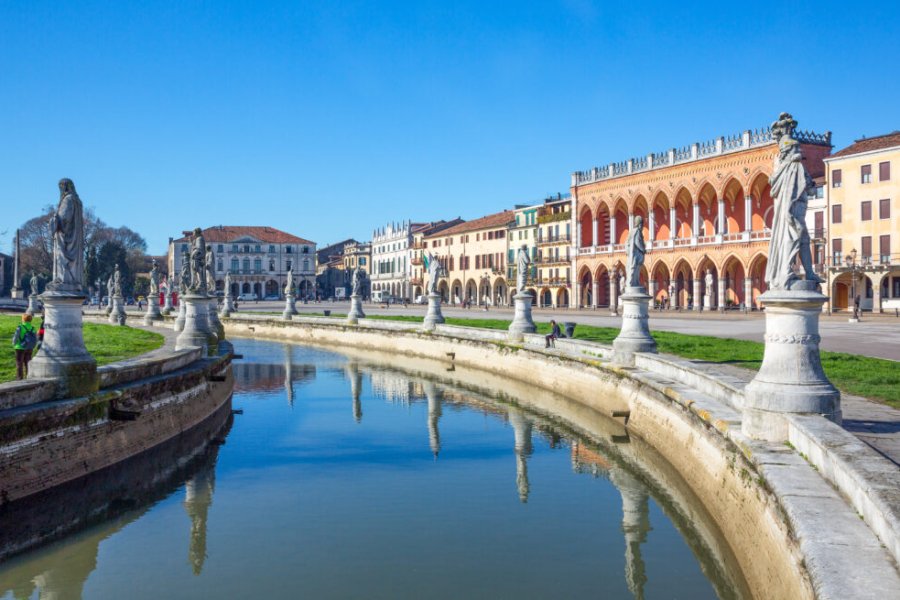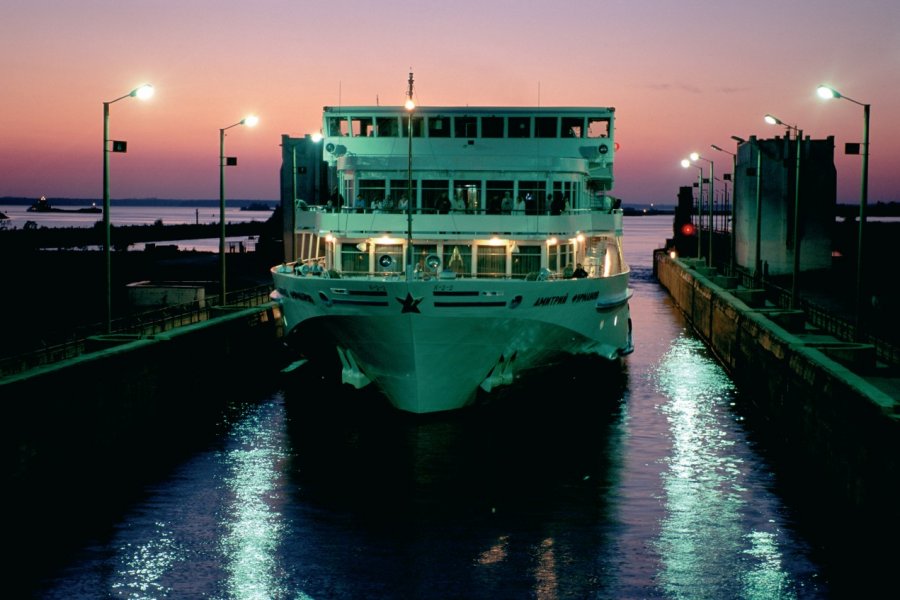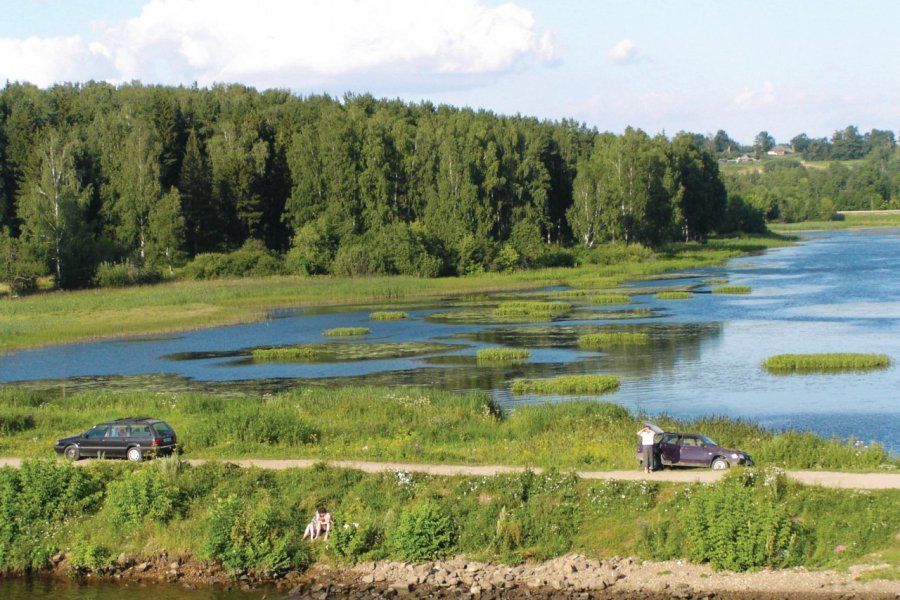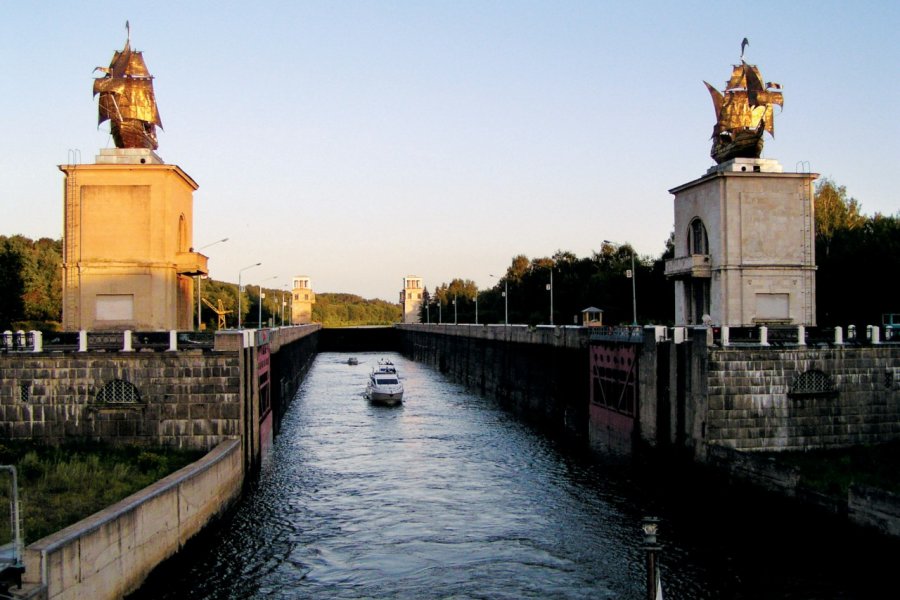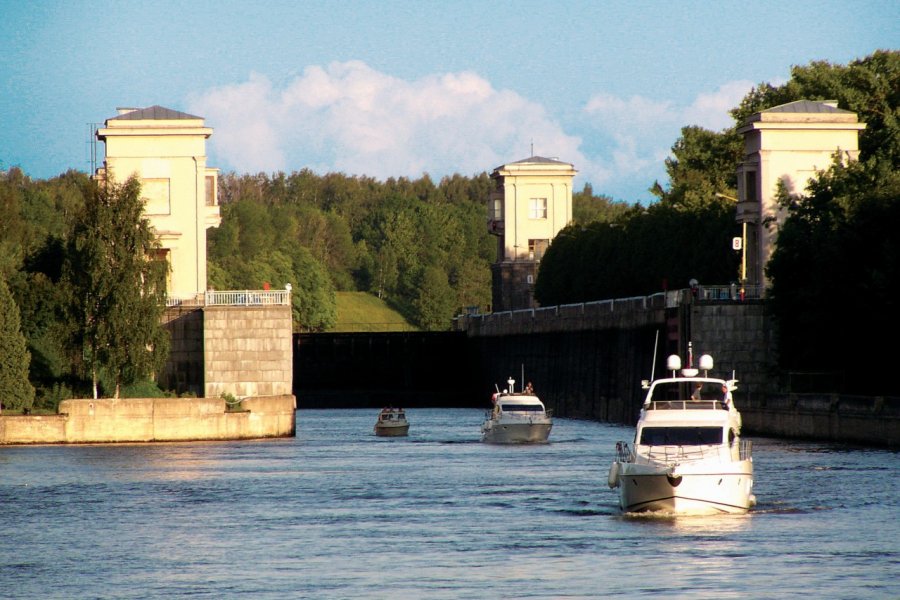Travel Guide Moscow Canal
Find an accommodation
Advertising
The cruise starts on the Moscow Canal and it will take about 7-10 days to reach the junction of the Volga. The canal is protected from the wind by high banks, and sometimes its raised bed allows a superb view of the surrounding countryside. Leisure centres have been set up all along the route, and you will meet many Russian families on picnics enjoying the sunshine. Before reaching the Volga, the canal has 6 locks numbered in descending order.From km 86 to 92, the navigation is done at the height of a reservoir. On the banks are scattered two or three storey houses with noble architecture.At km 93, it is the moment of arrival at lock no. 6. Like its sister locks Nos. 5, 4 and 3, it is 290 m long, 30 m wide and 5.50 m deep. Each lock is 8 m deep. At the bottom of the locks, there are male figures carved out of the stone. In all likelihood, these are portraits of some of the workers who worked on the site. Perhaps a way to bear witness to all these men, many of whom did not survive their work.At km 96, the imposing statue of a young woman carrying a model of a sailing boat stands in front of the upstream towers of lock no. 5. Like these workers immortalized in stone in Soviet times and seen in all four corners of Russia, she stands proudly and perhaps wishes you a safe journey!At km 103 it is the passage of lock No. 4At km 106, the Yakroma River flows parallel to the canal.At km 107, the boat must pass through lock no. 3, whose towers are surmounted by replicas of Christopher Columbus' famous galleon, the Santa Maria. The sun at the end of the day brings an incomparable glow to these golden replicas.At km 115, near the small town of Dmitrov, you can see the Assumption Cathedral. The city of Dmitrov was founded in 1154 by Yuri Dolgoruki and built as a stronghold to protect Moscow from the north. It is also known as the "Little Brother of Moscow", since it was owned by all the younger sons of Moscow's grand princes, including Ivan the Terrible, the first of whom inherited the capital. The city had its hour of glory in the 15th and 16th centuries and then during the construction of the canal. Today, all that remains of the mighty fortress is its ramparts, consisting of high earthen embankments encircling the old wooden city of the 19th century.At km 165, passing through Lock No. 1 and entering the Volga River, which the Russian writer Yevgeny Markov described as Russia itself, its people, its history and its nature.
Suggested addresses Moscow Canal
Weather at the moment
Advertising
Organize your trip with our partners Moscow Canal
Transportation
Book your plane tickets
Car Rental
Boat rental
Accommodation & stays
Find a hotel
Holiday rental
Find your campsite
Tailor-made trip
Immersion travel
Services / On site
Activities & visits
Find a doctor


